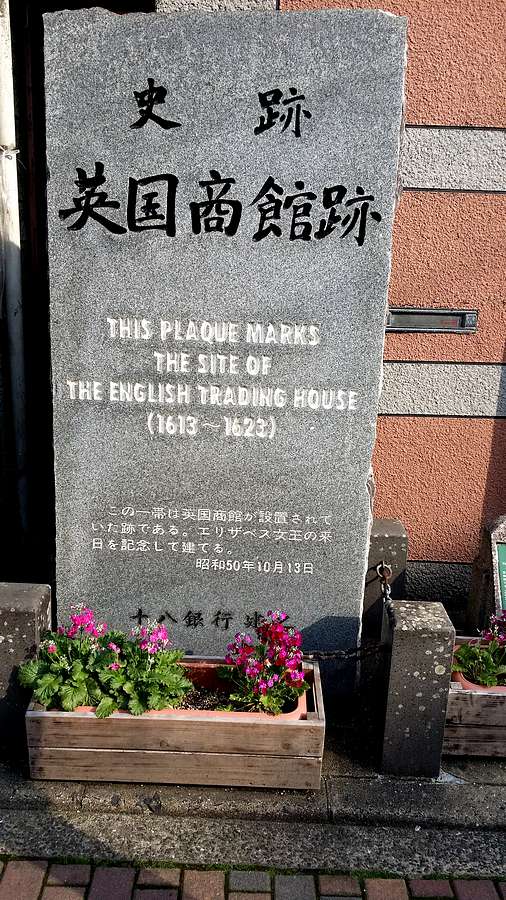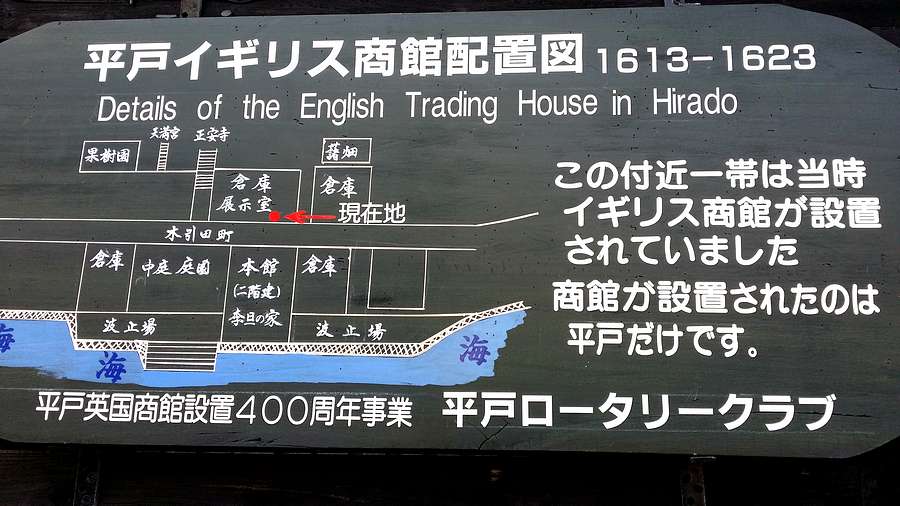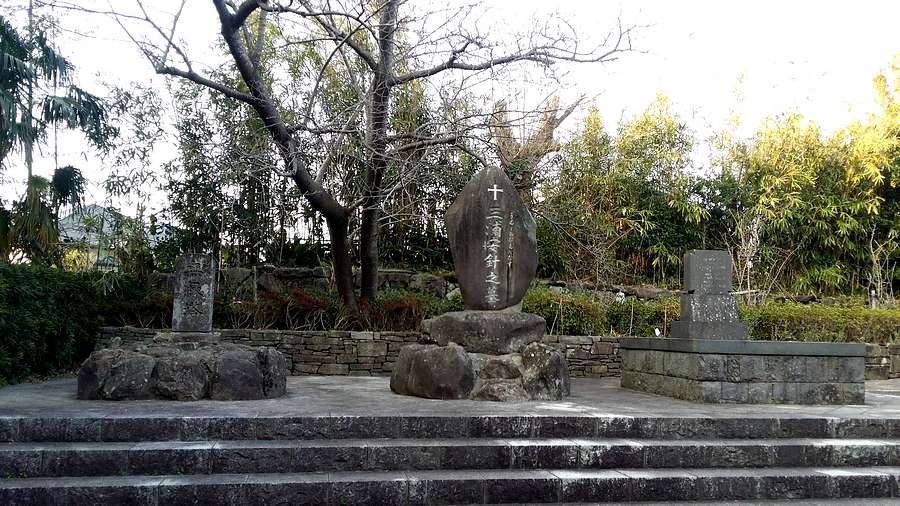
The Liefde was originally called the Erasmus. This statue of Erasmus seems to have been fixed to the stern of the ship. It is preserved among the treasures of a Japanese temple.
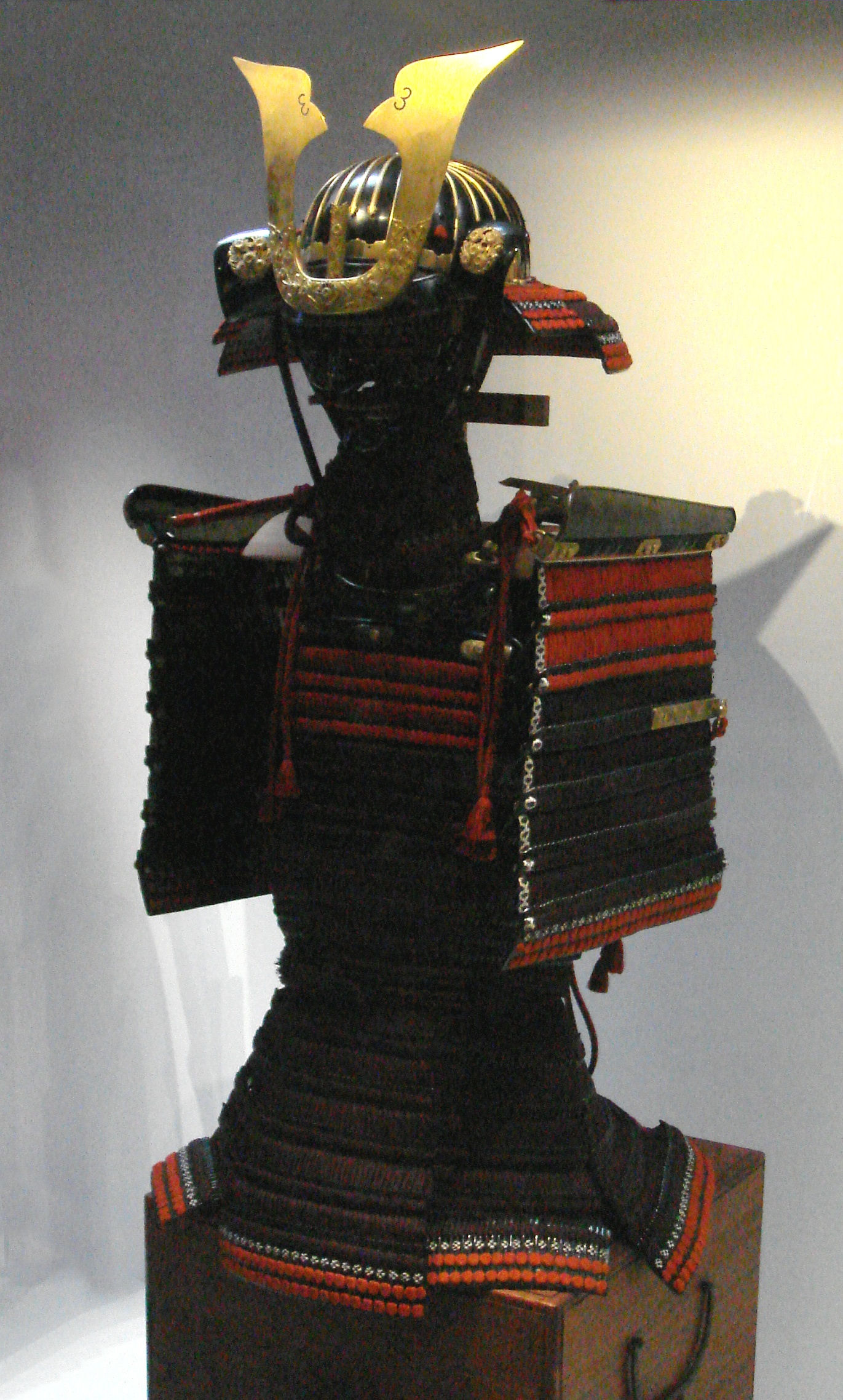
Japanese armor sent to King James of England by Toyotomi Hideyoshi

The Bay of Hirado, with the English Factory flying the red cross of England on the left side, the Dutch factory being the last building to the right with its flag. The large central compound was the seat of the Matsuura lords.
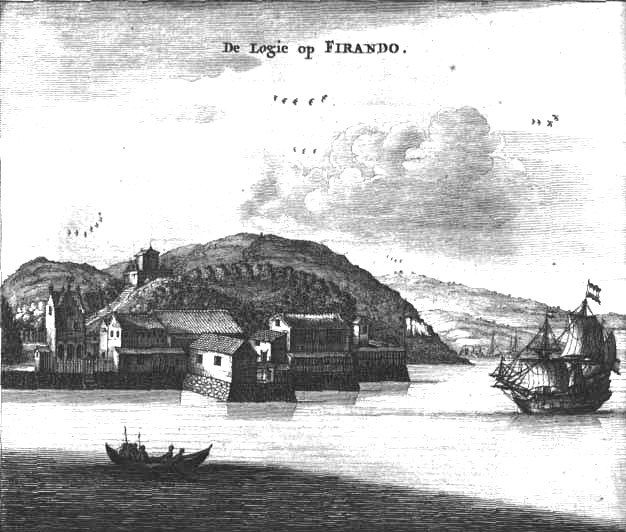
The Dutch factory in Hirado

